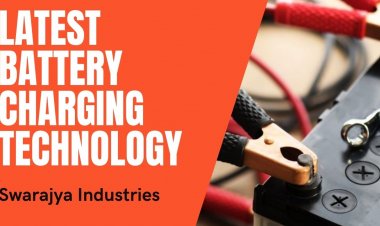High Capacity Battery for E-Rickshaw
Today battery manufacturers are trying their best to create battery life of 18 to 24 months for e-rickshaw. Some typical tubular design batteries last for a period of 12 to 15 months, But most batteries only works only 7 to 8 months.

Today battery manufacturers are trying their best to create battery life of 18 to 24 months for e-rickshaw. Some typical tubular design batteries last for a period of 12 to 15 months, But most batteries only works only 7 to 8 months. Today most of the batteries for e-rickshaws are available in the market with a 6 month warranty. I believe that for the e-rickshaw, the battery warranty should be 18 months so that the e-rickshaw driver can make some profit. If you see the value of e-rickshaw, then it is only 50 thousand to 1.5 lakh rupees, the e-rickshaw battery costs up to 20 to 25 thousand rupees. If the driver has to spend 25 thousand rupees on the battery every six months, his profit is reduced. Therefore, we should try every possible way to increase the lifespan of e-rickshaw battery.
In the efforts so far, it has been found that the Tubular battery gives better results for e-rickshaw batteries. In many research works, it has been found that Duty Cycle is very good with flat plate battery but its lifetime is not very high. While the Tubular Plate battery gives less capacity than the flat plate battery, but the life span is high.
The following three main reasons for the defect of e-rickshaw batteries are:
1. Corrosion on the grid.
2. Fall of paste.
3. Sulphation on Negative.
To reduce the corrosion on the grid, ALABC did many research. He has mixed tin in the alloy to reduce the corrosion on the grid. Its results have been very good. We can now do this work in India as well. The tin is comfortably mixed in the lead alloy.
Barium or silver can also be used to reduce corrosion. Due to high price value, silver is not possible to use. There is a problem with Silver and that if you have used silver in the alloy of the grid but the curing of the plate is not well then the coating will flick off your plate. Therefore, only those who have the correct knowledge of curing, only think about Silver.
Deterioration of paste is also a major problem. The problem of paste loss is mainly due to inaccurate or inadequate curing. Keeps the correct type of paste because paste pasted on the grid. Curing requires high humidity and high temperatures, so small battery manufacturers can not afford to easily do so. In addition, you can also mix some other compounds such as tetra basic lead sulfate in the paste. This will give your paste a nice structure.
Carbon technology is the best solution to solve the problem of sulfation on the negative. However the capacitance of the negative plate is very low. If somehow its capacitance is increased, then the battery will be satisfied on all expectations.
Prof. Detchko Pavlov and his team did a lot of research work to get the e-rickshaw battery out of expectations. They developed a new strap grid tubular plate. It is a thin Tubular plate whose electrical capacity is equivalent to flat plate and is equal to lifetime Tubular Plate.
This plate has properties of both flat and tubular plates. This plate was made primarily for electric vehicles. Making this plate in India is a bit difficult because it is not easy to fill it. The first positive paste was made and mixed with water to form liquid. Later this mixture was pumped into the tube. This facility is not currently available in our country. Powder filling is possible in our country right now.
Strap Grid Tubular Plate is mainly made for electric vehicles. In this, 1mm thick straps are used instead of spine (see Figure-1 in hard copy or pdf file).It consists of 14 straps per plate. Batteries made of these plates were tested on solar, electric vehicles and hybrid electric vehicles and their results were satisfactory. Planned prototype of 100Ah battery was also made in keeping with the prompts of
Prof. Pavlov, whose structure had the following characteristics: -
1. 6.7mm width and 12mm thickness strap (cut from a lead sheet).
2 . Negative grid of 2.2mm
3. 8 Positive and 9 Negative Assemblies Per cell
4. Anti-corrosive antimony alloy use in positive grid
5. Use of graphite and carbon additive in negative paste.
Since our country has powder filling facility, we will adopt an ellipse tube instead of the flat ellipse suggested by Dr. Pavlov. However this task will not be so easy anymore. Once the facility of filling of flat ellipse size suggested by Dr. Pavlov will be available this problem will also end.
Dr. C.S. Ramanathan, Battery Consultant, ramanathancs58@gmail.com, Mob.: 9845049975



























